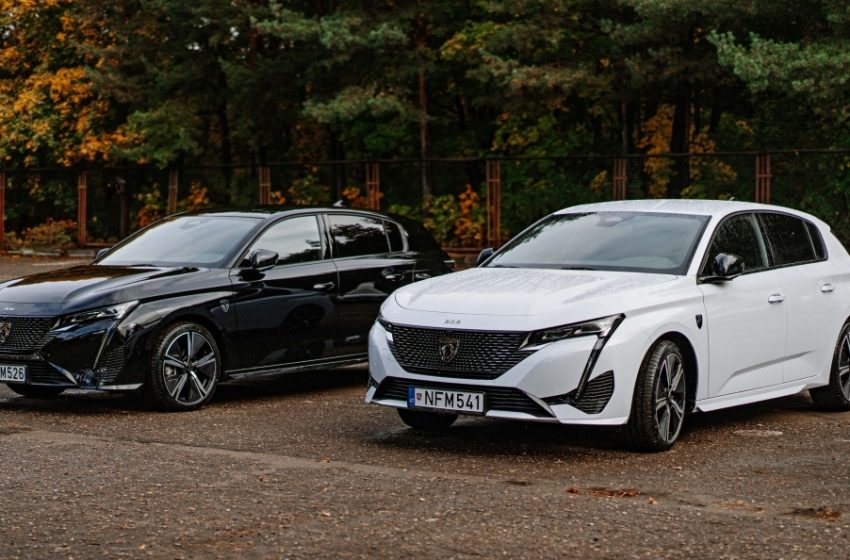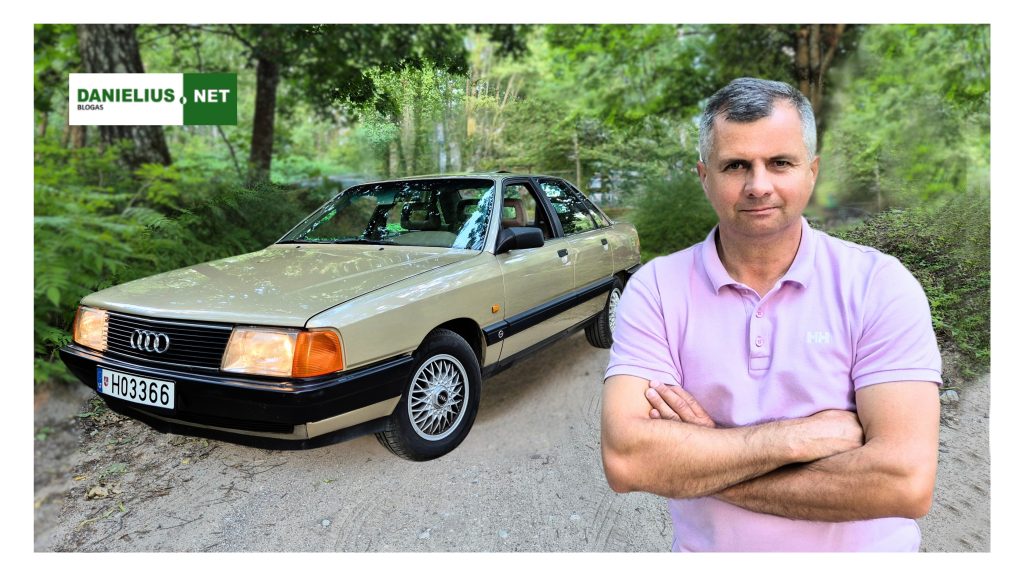Kaunas Car Rent Services – A Detailed Guide for 2025 Travelers

Kaunas, Lithuania’s second-largest city, has rapidly evolved into a dynamic destination for both tourism and business. With its strategic location, vibrant architecture, and proximity to key Lithuanian landmarks, Kaunas attracts thousands of visitors annually. For many of them, renting a car is the most practical and efficient way to navigate the city and explore the wider region.
This article outlines everything travelers should know about renting a car in Kaunas, including service options, pricing, local regulations, and driving conditions — based on up-to-date information and insights into the Lithuanian transport environment.
Overview of Kaunas Car Rent Services
Car rental services in Kaunas are well-developed, offering a wide selection of vehicle types, flexible terms, and convenient pickup locations. Travelers can typically choose from the following vehicle categories:
- Economy cars – ideal for solo travelers or couples looking for a budget-friendly and fuel-efficient option.
- Compact and mid-size vehicles – suited for families or longer journeys.
- SUVs and 4x4s – recommended for rural travel or winter months.
- Electric vehicles (EVs) – increasingly available in Kaunas, with charging infrastructure expanding across the city.
Driving in Kaunas: Local Rules and Conditions
Lithuania maintains high road safety standards, and Kaunas is no exception. Roads in and around the city are generally in excellent condition, with well-marked signage and modern roundabout infrastructure.
Important legal and safety information:
- Driving Side: Right-hand side.
- Speed Limits: 50 km/h in urban areas, 90 km/h on rural roads, 130 km/h on highways (or 110 km/h during winter months).
- Alcohol Limit: 0.04% blood alcohol concentration for experienced drivers; zero tolerance for novice drivers (under 2 years licensed).
- Mobile Phones: Only hands-free use is permitted while driving.
During winter (November to March), Lithuanian law mandates the use of certified winter tires. Rental cars are legally required to be equipped accordingly, so always confirm before departure.
Parking and City Navigation
Kaunas offers a wide range of parking options, with municipal zones divided by color-coded pricing tiers:
- Blue zone: City center, €1.80/hour
- Red zone: Central commercial districts, €1.00–€1.50/hour
- Yellow/Green zones: Residential areas and outskirts, €0.30–€0.60/hour
Parking payments can be made via:
- Municipal parking meters
- SMS (Lithuanian SIM required)
- Mobile apps (e.g., m.Parking or uniPark)
Google Maps and Waze are both reliable tools for navigation, traffic updates, and real-time parking availability.
Renting a Car in Kaunas to Explore Post-Soviet Architecture: A Road Trip Through Urban History
Kaunas, Lithuania’s second-largest city, offers a unique blend of architectural styles, reflecting its complex history. From interwar modernism to Soviet-era brutalism, the city’s urban landscape serves as a living museum for architecture enthusiasts. Renting a car in Kaunas provides the flexibility to explore these diverse architectural landmarks at your own pace.
Starting Point: Žaliakalnis District
Begin your journey in the Žaliakalnis district, known for its interwar modernist architecture. This area showcases the “Architecture of Optimism,” a style that emerged during Lithuania’s independence between the World Wars. Notable sites include the Christ’s Resurrection Church, a monumental structure symbolizing national revival, and the Kaunas Garrison Officers’ Club, reflecting modernized historicism with nationalistic motifs.
Exploring Soviet-Era Architecture
Driving through Kaunas, you’ll encounter numerous examples of Soviet-era architecture, particularly in districts like Šilainiai, Dainava, and Eiguliai. These areas feature mass-produced apartment blocks, emblematic of Soviet urban planning. The Ninth Fort Museum stands as a poignant reminder of the past, with its brutalist monument commemorating victims of totalitarian regimes.
Architectural Highlights
- Kaunas Central Post Office: An example of functionalist architecture from the interwar period, showcasing clean lines and practical design.
- Žaliakalnis Funicular: One of the oldest operational funiculars in the world, offering a ride through history and panoramic city views.
- Aleksotas Funicular: Another historic funicular providing access to scenic viewpoints and reflecting early 20th-century engineering.
Practical Tips for Car Renters
- Vehicle Selection: Opt for a compact car to navigate narrow streets and urban areas efficiently.
- Navigation: Use GPS or mobile apps to locate architectural sites and plan your route.
- Parking: Familiarize yourself with local parking regulations to avoid fines.
- Weather Considerations: Be prepared for varying weather conditions, especially in winter months.
Embarking on a road trip through Kaunas allows you to delve into the city’s rich architectural tapestry, offering insights into its historical transformations. With a rental car, you have the freedom to explore these landmarks comprehensively, making your journey both educational and memorable.
Weekend Road Trips from Kaunas: Renting a Car to Discover Lithuania’s Lesser-Known Destinations
Lithuania’s compact size and well-maintained roads make it an ideal country for road trips. Starting from Kaunas, the nation’s second-largest city, travelers can easily access a variety of hidden gems that showcase the country’s rich history, diverse landscapes, and cultural heritage. Renting a car provides the flexibility to explore these lesser-known destinations at your own pace.
1. Rumšiškės Open-Air Museum
Located approximately 20 km east of Kaunas, Rumšiškės is home to one of Europe’s largest open-air ethnographic museums. Spanning 175 hectares, the museum features over 140 authentic buildings from the 18th and 19th centuries, representing Lithuania’s main ethnographic regions: Aukštaitija, Samogitia, Dzūkija, and Suvalkija. Visitors can explore traditional farmsteads, mills, and workshops, gaining insight into rural Lithuanian life.
2. Tytuvėnai Regional Park
Approximately 100 km northwest of Kaunas, Tytuvėnai Regional Park offers a blend of natural beauty and historical sites. The park encompasses hilly terrains, lakes, and wetlands, remnants of the Ice Age. Notable attractions include the 17th-century Tytuvėnai Monastery ensemble and various pagan memorials such as castle hills and burial mounds.
3. Dzūkija National Park
Situated about 100 km south of Kaunas, Dzūkija National Park is Lithuania’s largest protected area, covering 584.53 square kilometers. The park is characterized by extensive forests, marshes, and the Čepkeliai swamp. It’s an excellent destination for hiking, bird watching, and experiencing traditional villages like Zervynos, known for their wooden architecture.
4. Krekenava Regional Park
Located roughly 50 km north of Kaunas, Krekenava Regional Park is notable for its diverse flora and fauna, including the reintroduced European bison population. The park features natural meadows, forests, and the scenic Nevėžis River valley. Visitors can explore nature monuments such as the Daniliškis Lime Tree Alley and various ancient oak and spruce trees.
5. Kauno Marios Regional Park
Just east of Kaunas, this park surrounds the Kaunas Reservoir and offers recreational opportunities like hiking and bird watching. Key attractions include the Arlaviškis botanical reserve, known for its juniper valley, and the Pažaislis Monastery, a 17th-century Baroque architectural masterpiece.
6. Žemaičių Kalvarija
Approximately 200 km northwest of Kaunas, Žemaičių Kalvarija is a significant Catholic pilgrimage site. The town hosts the annual Great Žemaičių Kalvarija Festival in July, attracting visitors nationwide. The main church houses revered religious artifacts, including a sculpture of the crucified Jesus and a painting of St. Maria brought from Rome in the 17th century.
Tips for Renting a Car in Kaunas:
- Vehicle Selection: Opt for a compact or mid-size car for better fuel efficiency and ease of navigation through rural roads.
- Documentation: Ensure you have a valid driver’s license and familiarize yourself with local driving laws.
- Navigation: Use GPS or mobile apps to plan routes and check for real-time traffic updates.
- Fuel Stations: Fuel stations are readily available along major routes, but it’s advisable to fill up before venturing into remote areas.
Embarking on a weekend road trip from Kaunas allows travelers to uncover the rich tapestry of Lithuania’s lesser-known destinations, offering a blend of natural beauty, historical significance, and cultural experiences.
EV Rentals in Kaunas: Can You Rely on Charging Infrastructure Beyond the City Center?
As electric vehicles (EVs) gain popularity, Kaunas, Lithuania’s second-largest city, is witnessing a surge in EV adoption. For those considering Kaunas car rent services an EV in Kaunas, understanding the availability and reliability of charging infrastructure, especially beyond the city center, is crucial.
Charging Infrastructure Within Kaunas
Kaunas has made significant strides in enhancing its EV charging network. The city boasts approximately 60 charging points, including 25 rapid charging stations exceeding 43 kW. These stations are strategically located throughout the city, ensuring accessibility for both residents and visitors.
A notable development is the establishment of the largest EV charging hub in the Baltics at the Akropolis shopping center. This facility features 20 charging stations, comprising 12 DC fast chargers and 8 AC chargers, capable of serving up to 40 EVs simultaneously. Plans are underway to expand this capacity to accommodate 80 vehicles, with a total power output exceeding 3 megawatts.
Additionally, Kaunas Airport has introduced seven EV charging stations in its long-term parking area, with further expansions planned to support the growing number of electric vehicles.
Charging Infrastructure Beyond the City Center
While Kaunas city center is well-equipped with charging facilities, the availability of charging stations diminishes as one moves towards the outskirts and rural areas. However, efforts are being made to address this gap.
For instance, a new charging park has been inaugurated along the A1 motorway near the Urban Hub, featuring 13 modern 50 kW charging stations capable of serving 26 vehicles simultaneously.
Moreover, Eldrive has opened a charging park equipped with ten 200 kW ultra-fast charging stations, complemented by amenities like a café and a convenience store, enhancing the charging experience for EV users traveling beyond Kaunas.
Considerations for EV Renters
- Route Planning: Before embarking on a journey beyond Kaunas, it’s advisable to plan your route meticulously, identifying available charging stations along the way.
- Charging Apps: Utilize reliable EV charging apps to locate stations, check availability, and plan charging stops efficiently.
- Charging Time: Be mindful of charging times, especially at slower charging stations, and incorporate this into your travel schedule.
- Connector Types: Ensure compatibility between your EV’s connector type and the charging stations you plan to use.







